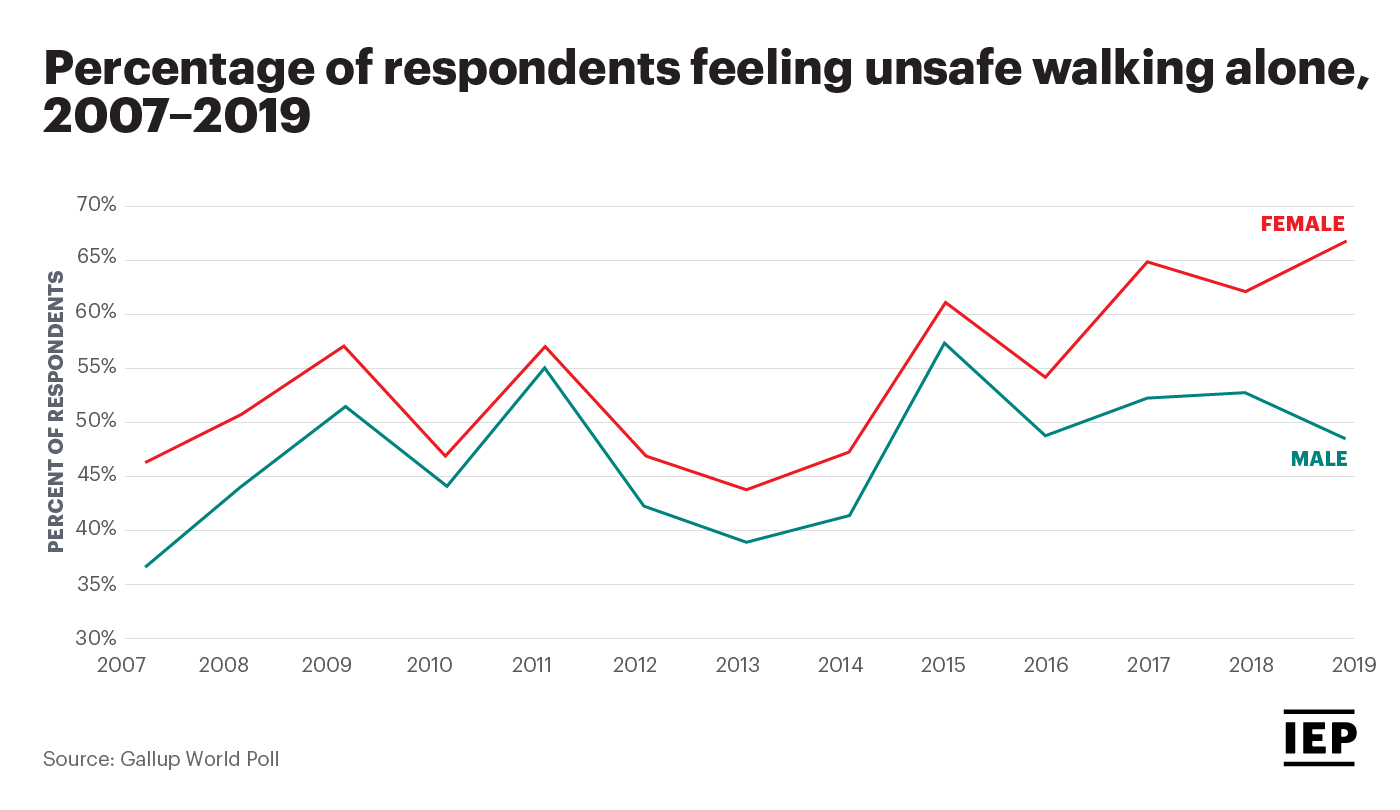Investigating The Increase In Femicide: Causes And Consequences

Table of Contents
Socio-Cultural Factors Contributing to Femicide
Deep-rooted societal structures and cultural norms significantly contribute to the perpetuation of femicide. Understanding these factors is crucial in developing effective prevention strategies.
Gender Inequality and Patriarchy
Deep-rooted patriarchal structures often normalize violence against women, viewing them as subservient and less valuable. This inequality manifests in various ways:
- Limited economic opportunities for women: Financial dependence on men leaves women vulnerable to abuse and control, increasing their risk of femicide. Economic empowerment is a vital tool in reducing this vulnerability.
- Traditional gender roles: Societal expectations that reinforce male dominance and female submission create an environment where violence against women is more likely to be tolerated or even excused. Challenging these ingrained norms is paramount.
- Acceptance of violence as a means of control: In many cultures, violence is seen as an acceptable, even justifiable, method of controlling women within relationships. This normalization of violence fuels a cycle of abuse that can tragically culminate in femicide.
Harmful Masculinity and Entitlement
Toxic masculinity, characterized by aggression, dominance, and a sense of entitlement, plays a significant role in femicide. This harmful ideology manifests as:
- Belief in male entitlement over women's bodies and lives: A sense of ownership and control over women is a dangerous precursor to violence. Challenging this mindset is crucial.
- Normalization of violence and aggression as acceptable male behaviors: Societal acceptance of aggressive behavior in men reinforces harmful patterns and creates an environment where violence is more likely to occur.
- Lack of accountability and consequences for perpetrators of violence: A failure to hold perpetrators accountable for their actions emboldens them and perpetuates the cycle of violence. Stricter enforcement of laws and harsher penalties are essential.
The Role of Media and Social Norms
The portrayal of women in media and the perpetuation of harmful stereotypes can subtly yet powerfully contribute to the normalization of violence against women:
- Objectification and sexualization of women in media: The constant objectification of women in advertising, film, and other media contributes to a culture that devalues women and treats them as commodities.
- Reinforcement of misogynistic attitudes and beliefs through popular culture: Media that perpetuates harmful stereotypes and glorifies violence against women contributes to the acceptance of such behavior.
- Lack of positive representations of healthy relationships and gender equality: A lack of positive role models and portrayals of healthy, equitable relationships in media leaves a void that can be filled with harmful stereotypes and attitudes.
Legal and Institutional Failures in Addressing Femicide
Inadequate legal frameworks and institutional responses contribute significantly to the problem of femicide. Addressing these failures is crucial in preventing future tragedies.
Weak Law Enforcement and Judicial Systems
Ineffective law enforcement and judicial systems often fail to bring perpetrators of femicide to justice:
- Lack of specialized training for law enforcement on gender-based violence: Police officers often lack the necessary training to effectively investigate and respond to cases of gender-based violence, including femicide.
- Insufficient resources dedicated to addressing femicide cases: A lack of funding and resources hinders effective investigations and prosecutions.
- Judicial bias and leniency towards perpetrators: In some cases, judges show bias towards perpetrators, leading to lighter sentences and a lack of accountability.
Inadequate Protection for Victims of Domestic Violence
The failure to provide adequate protection for victims of domestic violence is a major contributing factor to femicide:
- Lack of access to safe shelters and emergency housing: Women facing domestic violence often lack access to safe places to escape their abusers.
- Inadequate funding for victim support programs: Underfunded support programs limit the assistance available to women at risk.
- Ineffective monitoring of perpetrators: Failing to monitor perpetrators effectively allows them to continue their abusive behavior and potentially escalate to femicide.
Lack of Comprehensive Legislation
The absence of specific laws addressing femicide or inadequate legal definitions hinders effective prosecution and prevention:
- Need for stricter legislation with harsher penalties for perpetrators: Stronger laws and harsher penalties are essential to deter perpetrators and ensure accountability.
- Improved data collection and reporting on femicide cases: Accurate data is crucial for understanding the scope of the problem and evaluating the effectiveness of interventions.
- Strengthening international cooperation on combating femicide: Global cooperation is necessary to share best practices and coordinate efforts to address this transnational issue.
Consequences of Femicide
The consequences of femicide extend far beyond the immediate victim, impacting families, communities, and society as a whole.
Impact on Families and Communities
The loss of a woman to femicide has devastating consequences for families and communities:
- Emotional trauma, grief, and psychological distress for survivors: The emotional toll on family members and loved ones is immense and long-lasting.
- Economic hardship and loss of income for families: The loss of a woman often results in significant economic hardship for the family.
- Erosion of community trust and safety: Femicide undermines community trust and safety, creating fear and anxiety among women.
Public Health Implications
Femicide is a significant public health issue with lasting consequences:
- Increased rates of mental health issues among survivors and witnesses: Exposure to violence has severe mental health consequences for survivors and those who witness it.
- Negative impact on overall societal well-being: Femicide creates a climate of fear and insecurity that undermines societal well-being.
- Need for comprehensive public health interventions: Addressing femicide requires a comprehensive public health approach that includes prevention, intervention, and support services.
Conclusion
The escalating rates of femicide represent a profound failure to protect women and girls. Addressing this crisis requires a multi-faceted approach that tackles the root causes – deeply ingrained societal inequalities, harmful gender norms, and weak legal frameworks. We must strengthen laws, improve law enforcement responses, and invest in prevention and support programs. By confronting the issue head-on and promoting gender equality, we can work towards a future where femicide is eradicated. Let's all contribute to ending the violence and creating a safer world for women everywhere. Join the fight against femicide and help us demand justice and equality. Understanding the complexities of femicide, including its links to other forms of gender-based violence, is the first step towards creating effective solutions.

Featured Posts
-
 Reps Vow To Recover 1 231 Billion From Oil Firms
May 20, 2025
Reps Vow To Recover 1 231 Billion From Oil Firms
May 20, 2025 -
 Ai Powered Agatha Christie Writing Classes A Bbc Initiative
May 20, 2025
Ai Powered Agatha Christie Writing Classes A Bbc Initiative
May 20, 2025 -
 Suki Waterhouses Met Gala Look A Retrospective On Her Style Evolution
May 20, 2025
Suki Waterhouses Met Gala Look A Retrospective On Her Style Evolution
May 20, 2025 -
 Manaus Isabelle Nogueira Anuncia Maiara E Maraisa Para O Festival Da Cunha
May 20, 2025
Manaus Isabelle Nogueira Anuncia Maiara E Maraisa Para O Festival Da Cunha
May 20, 2025 -
 Bochum Und Holstein Kiel Abstieg Besiegelt Leipzig Scheitert In Der Champions League Qualifikation
May 20, 2025
Bochum Und Holstein Kiel Abstieg Besiegelt Leipzig Scheitert In Der Champions League Qualifikation
May 20, 2025
